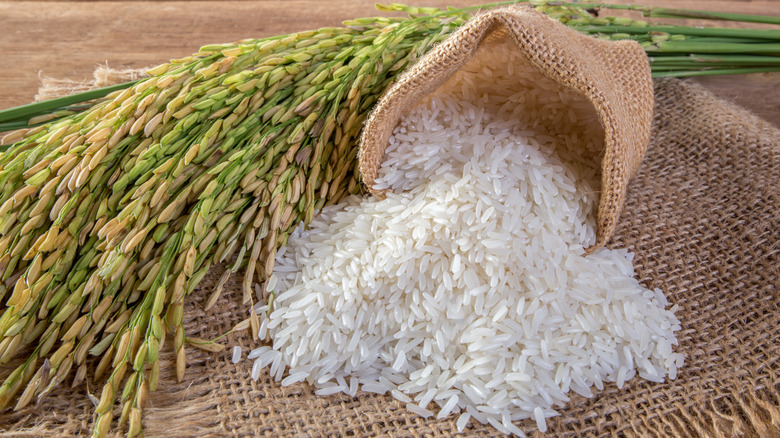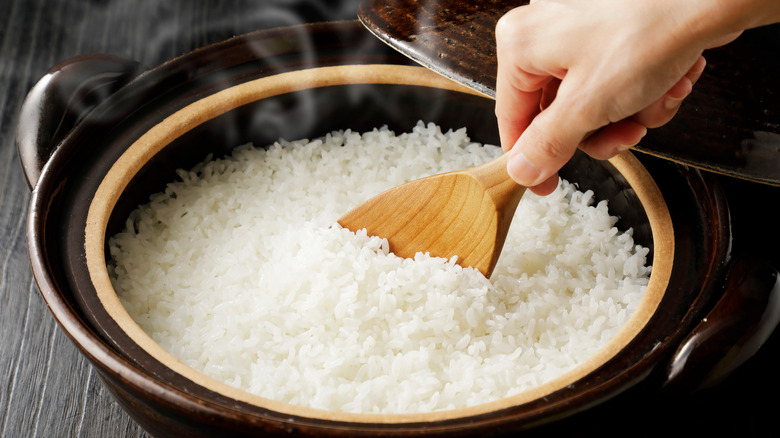Is There A Benefit To Using Converted Rice Instead Of Regular?
First things first — converted rice isn't converted into anything. It's just another name for rice that's parboiled in its husk before it's processed for sale. For comparison, regular rice goes straight to processing, where the husk, germ, and bran are removed, leaving only the grain to be polished and packaged. Without getting into scientific minutiae, parboiling before processing changes the structure of the starches in the rice. The result is individual grains that better hold their shape and are less likely to form clumps during cooking (per Mahatma).
Parboiling rice isn't a modern-day invention. Sontag Consult reports the process has been around for thousands of years, back to a time when civilizations in Asia and around the world parboiled rice in clay pots to extend its shelf life and deter insect infestations. Another long-ago benefit? According to Healthline, parboiling whole rice made it easier to remove the outer shell, or husk, to get to the edible part of the plant. In other words, it was an old-world practical solution to problems far less common in 21st-century industrialized nations.
So what's the point?
Aside from converted rice being more aesthetically pleasing and easier to incorporate into recipes, Healthline reports converted rice is ever-so-slightly more nutritious than regular rice — at least when it comes to white rice. That's right. We were surprised, too. The more processed version of white rice is better for you.
In a side-by-side comparison of cooked, 5.5-ounce servings of converted white rice and regular white rice (neither enriched), the difference in calories, fat, and carbohydrates were almost negligible. That said, converted rice contains more thiamin and niacin than regular rice; both are B vitamins that play a key role in how the human body produces energy. Converted white rice also pulls ahead of regular white rice as a source of antioxidants, substances that help fight cell damage.
Another surprise: Converted rice —remember it's been parboiled during production — actually takes a bit longer to cook than regular rice (via Whole Foods Market). That little extra time, though, is part of the process that turns out fluffier, clump-free bowls of rice. And lest we forget, please don't confuse converted or parboiled rice with instant rice. That's a whole different product worthy of its own conversation.

